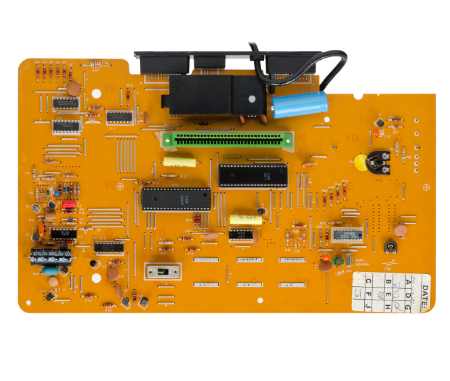
Table of Contents
Electronic device types
There are numerous methods to categorize them. Let’s take a look at these devices and see how we can classify them:
Electronic Devices Types
There are various sorts of Electronic Devices that can be classified based on their internal structure. Three types of devices can be discovered by examining the internal structure of an electronic system.
Input devices – An input device is a piece of hardware that provides data to a computer by producing electrical signals that can be processed in an electronic circuit. A keyboard, microphone, or switch are examples of input devices.
Information processing devices – A processing device is a device inside a computer that acts as an intermediate stage, interpreting and manipulating incoming information or data. A central processing unit (CPU), motherboard, sound card, or video card are all examples of processing devices.
By elements.
Independent- Some Electronic Devices are referred to as “discrete,” and they contain the fewest minimum units conceivable. These can then be passive if they do not convert the signals they receive, such as capacitors, or active if they amplify or lower the signal, as transistors do.
Integrated-These are more sophisticated circuits because they combine the previous components with a board composed of a semiconductor material that may be integrated with or added to another circuit. Microchips are an example of a system that is small but complicated.
“The internal structure and components of electronic devices can be used to classify them.”
The First Law of Thermodynamics asserts that energy cannot be generated or destroyed, it can only be changed in form. A house with solar panels on its roof, for example, turns the sun’s heat energy into useful energy that may be used to light the residence or power small Electronic Devices. This process emphasizes the transformation of energy from heat energy to electrical energy.
Some energy sources are produced in massive quantities, going through a variety of procedures and traversing considerable distances before reaching consumers. When natural gas is used in power plant boilers, it heats the water and generates steam, which powers a turbine.
The turbine’s movement is a type of mechanical energy that is converted into electrical energy. Because the amount of energy that can go through wires is limited, and equipment in our houses can only operate within a particular range of electrical power input, the electric current is routed through a transformer. It is an electronic gadget that “steps down” the quantity of current within the tolerance range of our household devices or appliances. In other words, it modifies the current-voltage ratio in the electrical signal before it reaches the building.
Alternating current is the sort of electrical energy flow that is available in homes (AC). Its name implies that electrical current flows back and forth rather than just one way. The ability of this sort of current to traverse longer distances is a benefit. Energy power stations are typically located in settings remote from residential areas. This energy must be transported efficiently so that no energy is wasted in the process.
Output devices – An output device is a piece of hardware that receives data from a computer and converts it to a different format. Headphones, printers, and projector screens are examples of output devices.
Electronic Gadgets can also be classified according to their components. They are distinguished as both independent and integrated.
Independent – Electronic gadgets can be simple or discrete, which implies they are created as a single unit. Independent electronic gadgets include transistors, resistors, capacitors, and diodes.
Integrated components are sophisticated circuits that are created in conjunction with other components. A motherboard made of semiconductor materials or a microchip is two examples.
Analog electronic circuits
Most analog electronic products, such as radio receivers, are built from a few different sorts of basic circuits. Analog circuits, as opposed to digital circuits, use a constant range of voltage or current. The number of diverse analog circuits invented thus far is enormous, especially as a ‘circuit’ can be defined as anything from a single component to systems including thousands of components. Analog circuits are commonly referred to as linear circuits, even though several non-linear effects, such as mixers and modulators, are used in analog circuits. Vacuum tubes and transistor amplifiers, operational amplifiers, and oscillators are all examples of analog circuits.

Circuits digital
Electric circuits based on discrete voltage levels are known as digital circuits. Digital circuits are the most frequent physical representation of Boolean algebra, and they serve as the foundation for all digital computers. In the context of digital circuits, most engineers use the phrases “digital circuit,” “digital system,” and “logic” interchangeably. Most digital circuits operate on a binary scheme with two voltage levels labeled “0” and “1”. Often logic “0” will be a lower voltage and referred to as “Low” while logic “1” is referred to as “High”. Some systems, however, employ the reverse concept (“0” is “High”) or are currently based. The logic designer may frequently invert these concepts from one circuit to the next as they see fit to facilitate their design.

Leave a Reply